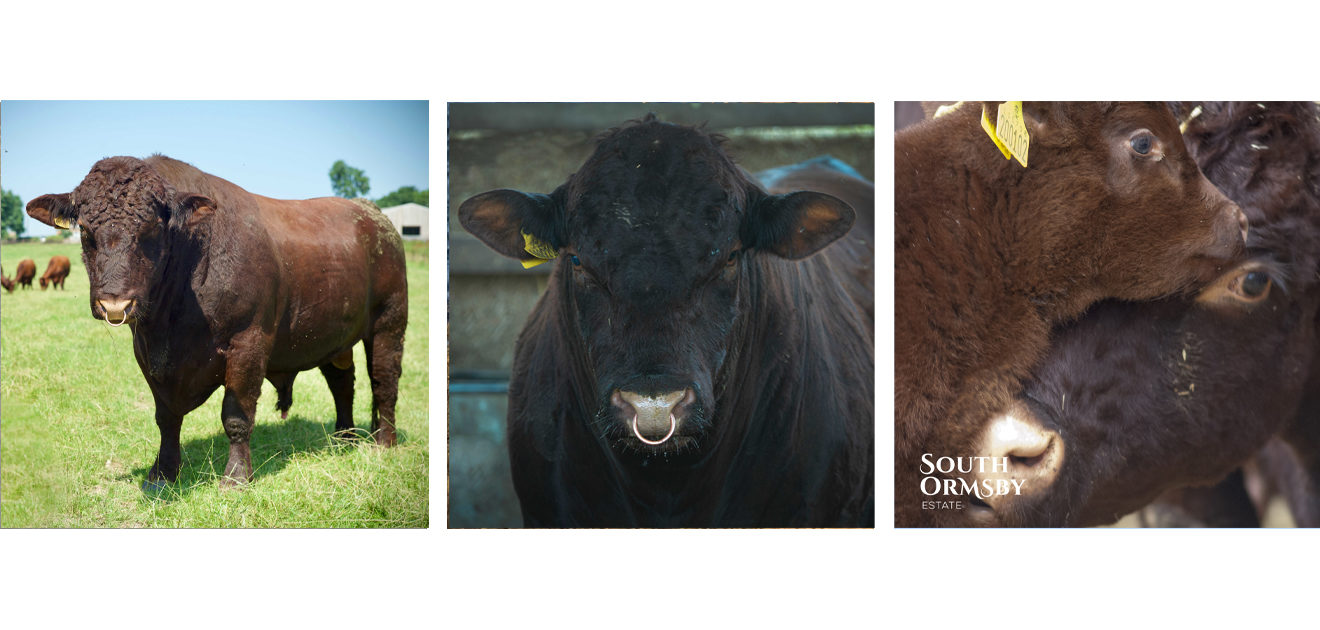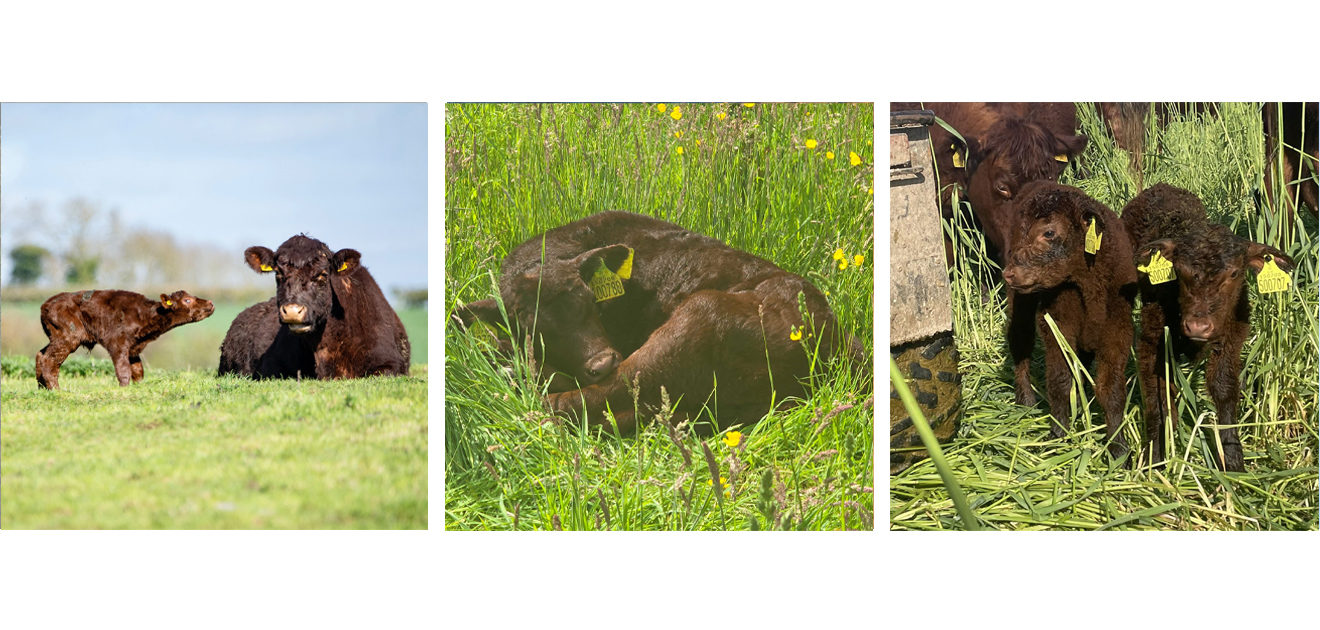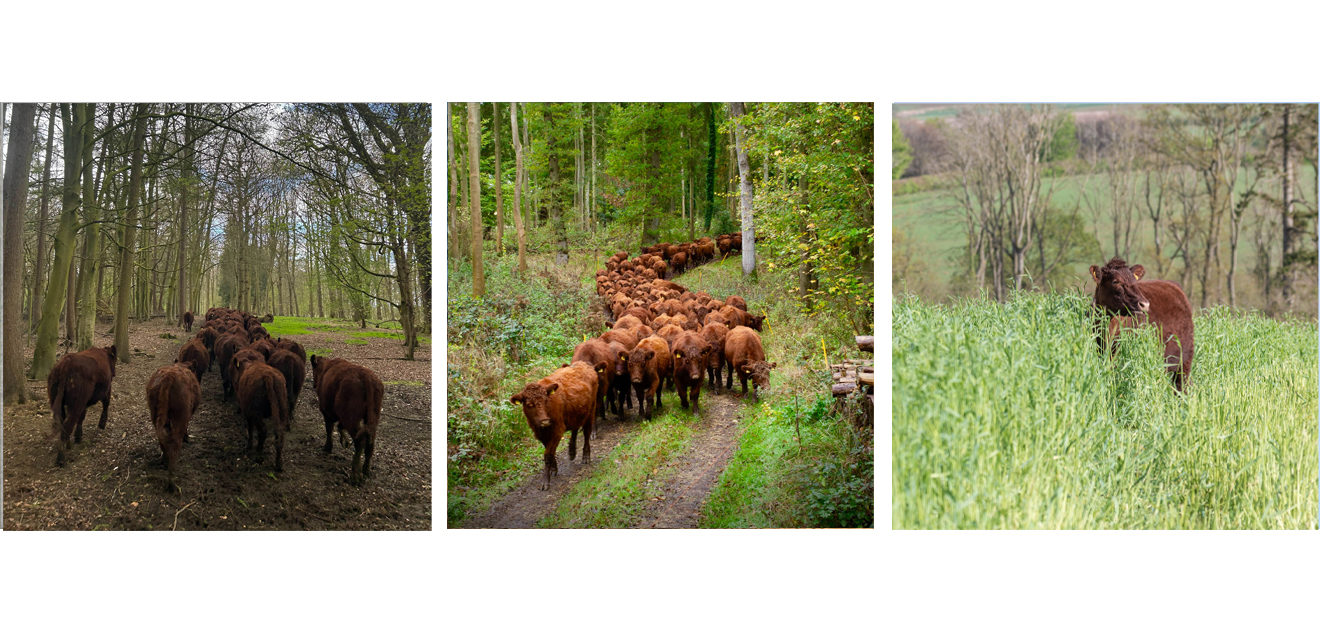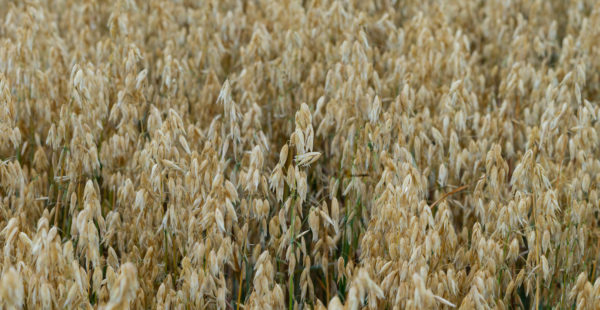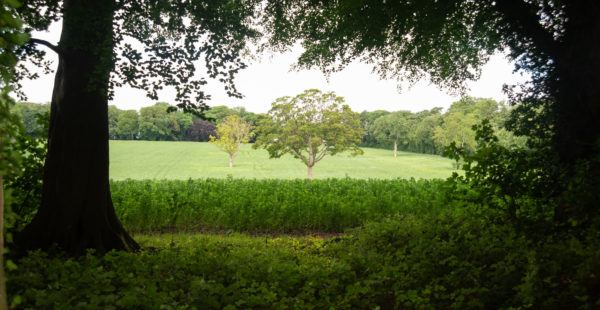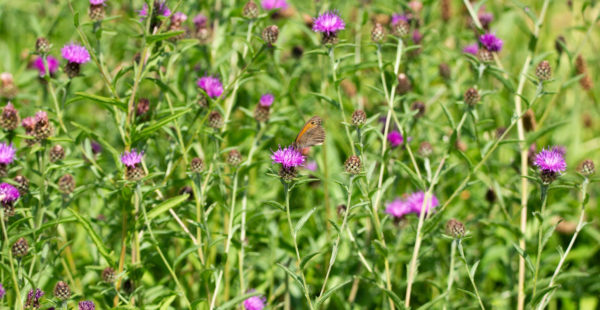Lincoln Reds: Past, Present & Future
Our grass-fed Lincoln Red beef is well known for its superior taste and quality. Read on to discover the full and fascinating story of how this charismatic native breed is helping to revitalise biodiversity, traditional rural know-how and our region’s economy.
LIFE ON THE PASTURE
South Ormsby Estate boasts one of the biggest herds of pedigree, original-population Lincoln Red cattle. We currently care for around 280 head of cattle and we manage numbers to ensure that the herd can thrive within our organic and regenerative system. We work out the amount of available dry matter and build in a 15% buffer. If, for example, our land could sustain 100 cattle at full capacity, we would aim to keep 85.
At the time of writing (June 2025), calving season is underway. We currently have 100 cows in production and there may be another 18 calves to come this month. Given that the herd mustered only 25 cows at the turn of the century, this is good news for the breed and for the Lincolnshire Wolds. We need grazing Reds to maintain our landscape in its time-honoured form. They fertilise the land the old-fashioned way and their activity prevents tree roots from disrupting the tell-tale dips and curves of our abandoned medieval villages.
All our cattle live outdoors, full-time, all-year round. They graze permanent pasture during their summer schedule from 1st May to 31st October. We then switch to the winter schedule from 1st November to 30th April and the Reds move to standing hay (with lots of rye and vetch) with silage as a supplement.
We’re committed to reducing our use of plastic. In future, we aim to feed our Lincoln Red herd with a pure growing-grass system in preference to silage wrapped in plastic. Where we do use plastic, we ensure that it is gathered and sent to a responsible recycler.
The herd team works on 18-month timescales and needs to ensure that the cattle get as much energy-rich food as possible within our system. As a benchmark, a cow needs to eat 3% of her bodyweight in grass every day. The availability of nutritious dry matter is closely monitored and the team have to be able to adapt to both very wet and very dry weather. If the team is planning for a wet midwinter, for example, they’ll use the dryer, milder start of the season to graze the herd on the low-lying fields most susceptible to standing water. The higher, dryer fields will be left until the colder, wetter months.
The team also takes care to pick fields with tree or hedgerow cover for periods of raw weather. When rain comes, the herd might move to the shelter of mature trees where they enjoy munching on leaves, twigs and ivy. In 2022, we began planting winter shelters for our Lincoln Reds. As they grow, these stands of trees are offering plenty of natural shelter for our herd, alongside our growing network of hedgerows.
In any given year, the bulls are introduced to the cows and heifers in mid-July. The mating season lasts for 63 days (or three cycles) ending in mid-September. This gives us a 63-day calving window starting between late April and early May and running to late June. At this time of year, the cows will get plenty of fresh, new-growth grass to stimulate milk production for their calves. We also get to avoid calving in cold, wet midwinter weather, which isn’t ideal for either the cattle or the herd team.
Our cows stay in family groups and will go to the same bulls year after year, helping us to avoid mixing direct bloodlines. Throughout the summer, we work hard to get the cows in the best condition to conceive. There’s an optimal weight range: as there’s a correlation between condition and fertility, the cows can’t be too fat or too lean. We plan everything well ahead and weigh them once per month.


